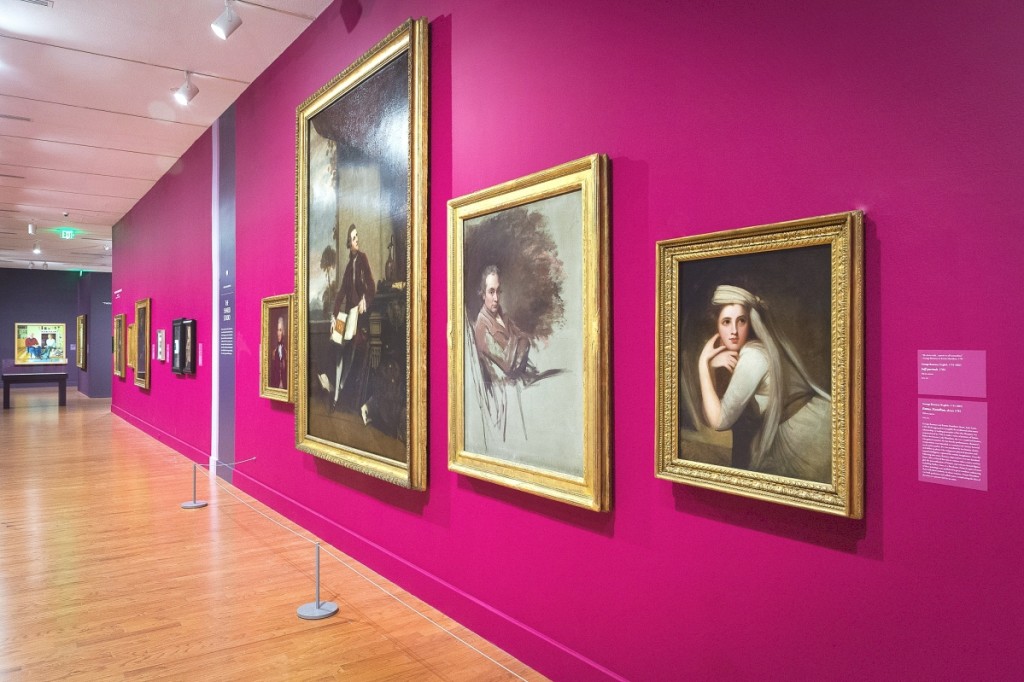
Installation image, “Love Stories from the National Portrait Gallery, London” at the Worcester Art Museum.
By Kristin Nord
WORCESTER, MASS. – As we move into the bleak midwinter, literally and figuratively, “Love Stories from the National Portrait Gallery, London,” has arrived as a spiritual tonic, zeroing in on many of Britain’s legendary couples and the ways in which love has played a part.
The Worcester Art Museum’s (WAM) galleries are alive with approximately 100 masterworks; it’s the first venue on an international tour while the National Portrait Gallery (NPG) is closed for a major redevelopment.
“When I reviewed the prospectus for the new touring exhibition in early 2020, Covid-19 was in the news, but the reality of the global pandemic had yet to be felt in Massachusetts,” Claire C. Whitner, PhD, the Director of Curatorial Affairs and James A. Wells Curator of European Art, said. “Months later, when the decision was made to host the exhibition at WAM, we were not only acutely aware of how our lives had been changed by the emergence of a novel virus, but also that love had become a very important theme for our unusual times.”
“Love Stories” traces the face of love through portraiture from the Sixteenth Century Renaissance-era in what amounts to a spirited intellectual cruise. At WAM visitors will encounter some of Britain’s most famous and passionate lovers in a star-studded lineup that includes John Lennon and Yoko Ono, Oscar Wilde and Lord Alfred Douglas, Emma Hamilton and Lord Nelson, and Elizabeth Barrett Browning and Robert Browning. There is love in many guises here, from forbidden and/or unrequited love to passionate companionship. There are famous examples of love affairs that burned explosively and ended disastrously, as well as those that have withstood the test of time.
“Portraits are a visual record of a relationship, celebrating key moments like engagements and weddings, serving as memorials to the deceased, or expressing adoration for an absent or scorned lover,” said Matthias Waschek, the Jean and Myles McDonough director of WAM. “But while much has been written or sung about love, ‘Love Stories’ is an opportunity to dive into this complex history through the visual arts, drawing on some of the most remarkable portraits that reflect this love back to the viewer, decades or even centuries later.”
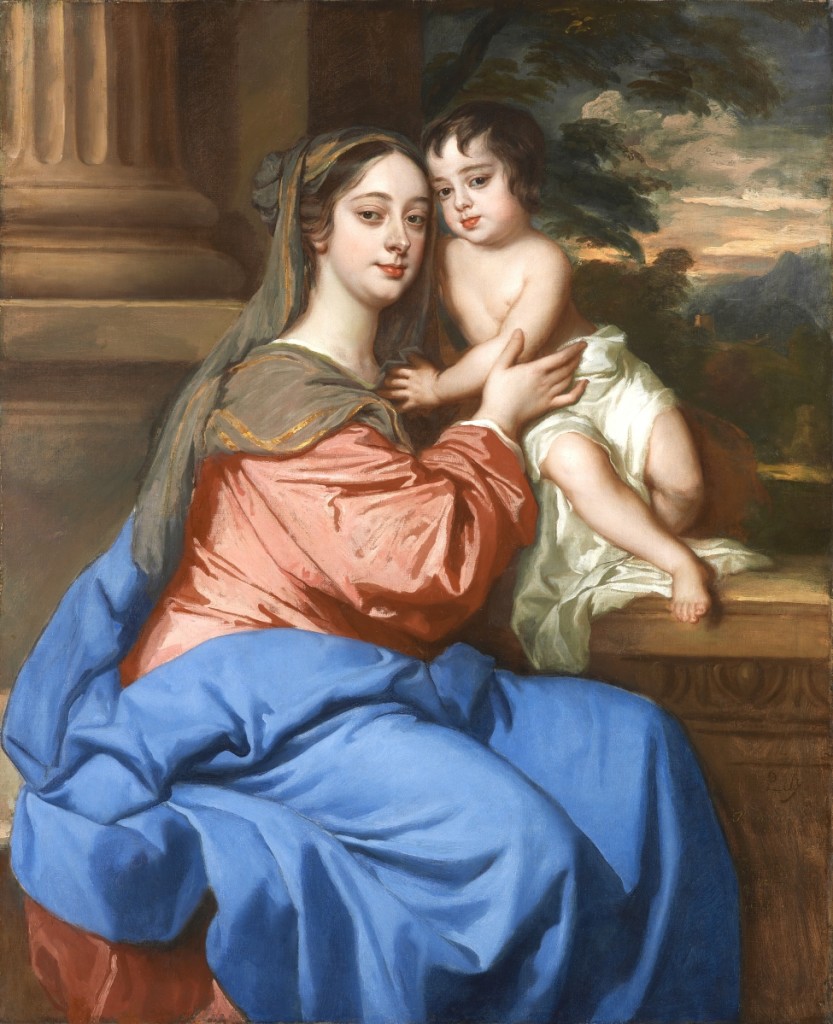
“Barbara Palmer (née Villiers), Duchess of Cleveland with her son, probably Charles FitzRoy, as the Virgin and Child” by Sir Peter Lely, circa 1664. Oil on canvas. National Portrait Gallery, London. Purchased with help from the National Heritage Memorial Fund, through the Art Fund (with a contribution from the Wolfson Foundation), Camelot Group plc, David and Catharine Alexander, David Wilson, E.A. Whitehead, Glyn Hopkin and numerous other supporters of a public appeal, including members of the Chelsea Arts Club, 2005. ©National Portrait Gallery, London.
“Love Stories” moves by theme from an exploration of the artist and muse to classic pairings, while it also looks at how the definitions of love have continued to evolve. A final section is devoted to contemporary photography, with iconic images of Twentieth Century celebrities and British royalty.
The NPG has tapped Louise Stewart, former curator, Sixteenth Century to Contemporary Collections; and Peter Funnell, a former curator, as well as contributors Simon Callow, Marina Warner and Kate Williams, for the accompanying book, Love Stories: Art, Passion & Tragedy, edited by Lucy Peltz, NPG’s Head of Collections Displays (Tudor to Regency) and senior curator, Eighteenth Century Collections.
While early portraits were generally made to mark key life events, such as marriage, the birth of a child or a professional achievement, Stewart writes, portraits by the mid-Eighteenth Century were reflecting the values espoused by romantic novelists. These novels pitted desire, love and longing alongside questions of morality, social status and faith. And they fueled a “culture of sensibility” that theorized that the ability to feel passionate, romantic love was a mark of refinement. Elizabeth Barrett Browning and Robert Browning’s love story evolved during this period and remains among the great stories in English literature. The two exchanged nearly 600 letters before they married, and Elizabeth’s Sonnets from the Portuguese, published in 1850, was drawn from letters during this courtship. They remain among the best-known series of love poems in the English language.
At the same time, the identity of the muse, “long understood as a beautiful, passive woman with whom the male artist becomes obsessed,” Stewart writes, grew more complex, the biographies of Emma Hamilton, Ellen Terry and Lee Miller, demonstrate.
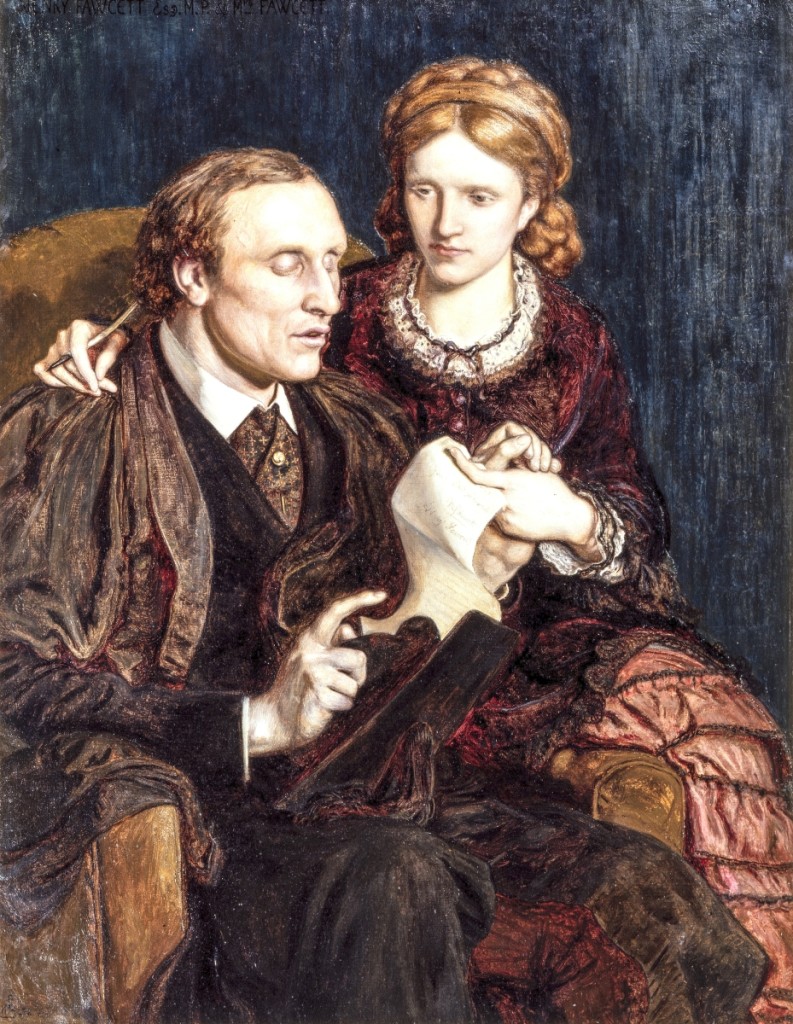
“Henry Fawcett; Dame Millicent Fawcett” by Ford Madox Brown, 1872. Oil on canvas. National Portrait Gallery, London. Bequeathed by Sir Charles Wentworth Dilke, 2nd Bt, 1911. ©National Portrait Gallery, London.
The artist George Romney was captivated by Emma Hart’s beauty and depicted her hundreds of times, as herself, as a character, or as a classical figure. Hart became adept at exploiting her skills as a model and actress – and by the 1790s, she had become famous throughout Europe, and married Lord Hamilton and became Admiral Horatio Nelson’s lover for what became a legendary ménage a trois.
As juicy stories go, Whitner said, “I find the love triangle between Emma Lady Hamilton, her husband Lord Hamilton, and the British naval hero Horatio Nelson to be completely captivating – in part, because such a love trio seems so transgressive of societal norms, even today, but also because it shines a light on Emma Hamilton, who clearly saw opportunity when it presented itself and made the most of it.”
Romney’s portraits enhanced the celebrity of both artist and sitter; in many ways Emma became Romney’s collaborator. In the years ahead she would be painted by other famous artists, including Joshua Reynolds and Thomas Lawrence.
Emma interestingly was not “a mere social climber; she seemed to possess a spirit that drew people, men in particular, to her, and this attraction was so powerful that the men in her life were willing to accommodate a major lifestyle change. This coquettishness, but also her playfulness, flair for the dramatic and seductiveness, emanate from her portrait (‘Emma as a Bacchante,’ 1797, Charles Knight after George Romney, Stipple engraving),” Whitner adds.
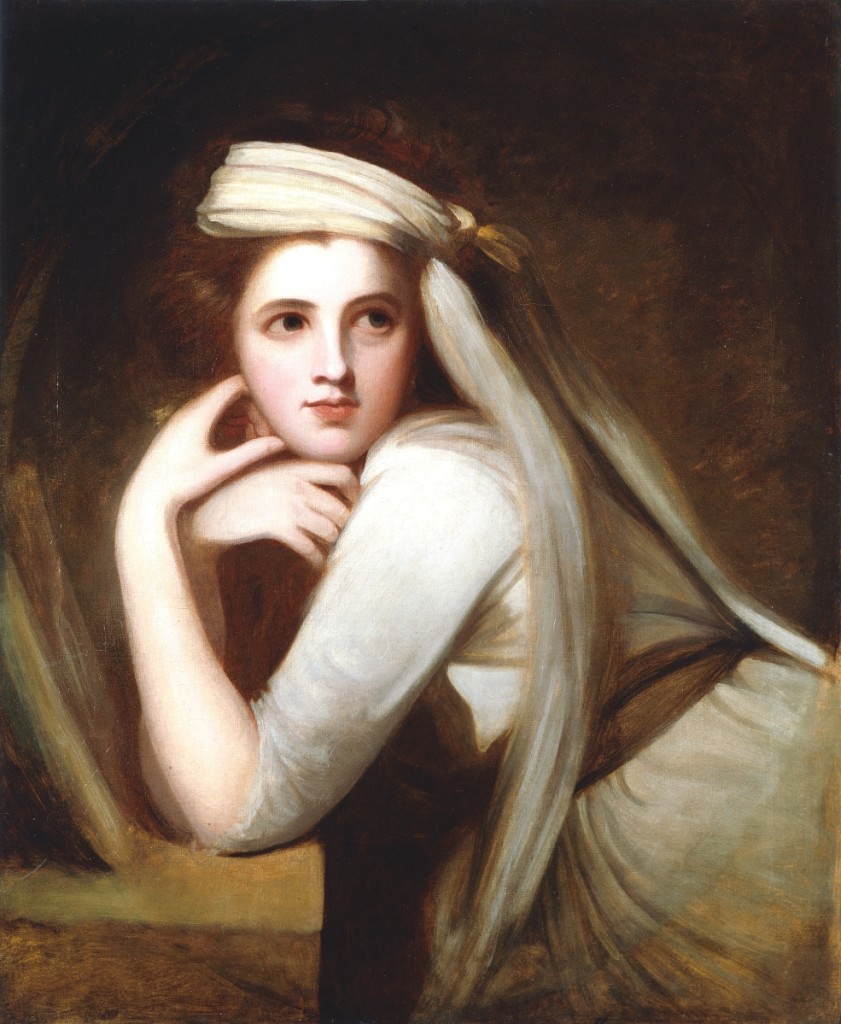
“Emma Hamilton” by George Romney, circa 1785. Oil on canvas. National Portrait Gallery, London. Purchased, 1870. ©National Portrait Gallery, London.
The artist G.F. Watts encountered the young actress Ellen Terry when she was performing in a play at The Haymarket, and ultimately married her, making it his mission to dissuade her from the dangers and temptations of the stage. In the portrait, “Choosing” (1864) he symbolizes Emma’s conflict by juxtaposing the red camelias and clutch of violets that she is holding in opposing hands. But Ellen proved far too high spirited for the husband who was some 30 years her senior. A separation agreement was drawn up, and Ellen reembarked on what became an acclaimed career in the theatre.
Man Ray was 17 years older than Lee Miller when their two lives became entwined. Miller was described as looking like “a sun-kissed goat boy from the Appian way, with Vogue editor Madge Garland noting that visitors to Man Ray’s studio in 1929 were “greeted by a vision so lovely they forgot why they had come.” She had arrived at his studio and announced, summarily, “I am your new student.” He demurred and yet “almost immediately, she was traveling with him to Biarritz – and their professional relationship – and intense love affair – was under way,” Marina Warner writes. His photographs of her became Surrealist classics. “The collaboration did not outlast their love, and that love was a short and stormy affair. Lee tested to the limit Man Ray’s Surrealist support for free love and would not commit to him alone.” After their breakup he created one of his most celebrated surrealist gifts, “The Metronome,” as a way by which to exorcise his yearning for her.
Oscar Wilde and Lord Alfred Douglas’ love story ended disastrously, with Wilde found guilty of gross indecency for homosexual offences and sentenced to two-year’s hard labor in prison. Samuel and Jessie Coleridge-Taylor, in contrast, had met as students at the Royal College of Music and forged a happy union as an interracial couple and a musical partnership. Similarly, Kenneth Green’s 1943 portrait memorializes the tender and longstanding union of Benjamin Britten and Peter Pears, who became lovers in 1939 and remained committed to one another until Britten’s death in 1976.
Lesbian relationships, in contrast, were not seen to threaten the status quo, and “Love Stories” offers up a succession of famous women couples, from Alice B. Toklas and Gertrude Stein to key members of The Bloomsbury Group, famously referred to as members that “lived in squares and loved in triangles.”
If the emphasis on companionship and the possibility of achieving personal happiness through a romantic relationship remained an important theme in ideas about love throughout the Nineteenth Century; by the late Nineteenth Century and into the Twentieth, traditional ideas of identity, family and marriage were increasingly being questioned in the wake of industrialization, urbanization, campaigns for women’s rights and the First and Second World Wars.
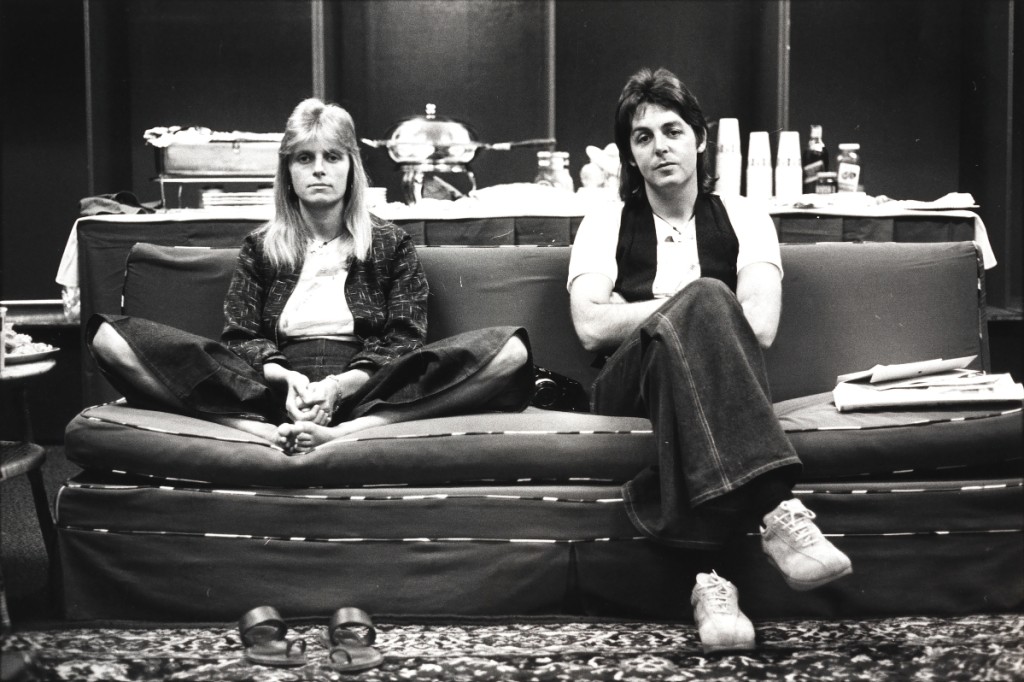
“Linda McCartney; Paul McCartney” by Humphrey Ocean, May 1976. Bromide fibre print. National Portrait Gallery, London. Given by Humphrey Ocean (Humphrey Anthony Erdeswick Butler-Bowdon), 2006. ©National Portrait Gallery, London.
By the 1960s and 1970s, with contraception widely available, creative couples were increasingly finding fulfillment through partnerships that straddled the boundaries between personal and professional life. And photography throughout much of the Twentieth Century had become a prime medium for marketing stardom.
The glamorous photographs of Audrey Hepburn, and Laurence Olivier and Vivien Leigh today reign as masterfully air-brushed stagecraft. And it’s disconcerting to consider the ways in which the royal wedding images of Diana Spencer and Prince Charles and now Meghan Markle and Prince Harry mirror one another. Much like the photographic portraits of Wallis Simpson and Edward VIII, Duke of Windsor, the images carefully belie historical fact.
The young Mick Jagger, captured in portraits with not just one, but two of his fashion-model wives, was pushing the definitions of marriage and commitment.
And while these Bloomsbury portraits shed light on the complex entanglements of men and women in the first decades of the Twentieth Century, their debates of long ago seem prescient, as we debate what constitutes intimacy, companionship and sexual identity in our time.
“Love Stories” will run through March 13, at Worcester Art Museum, 55 Salisbury Street, Worcester, before traveling to the Denver Art Museum. For additional information, www.worcesterart.org or 508-799-4406.




















